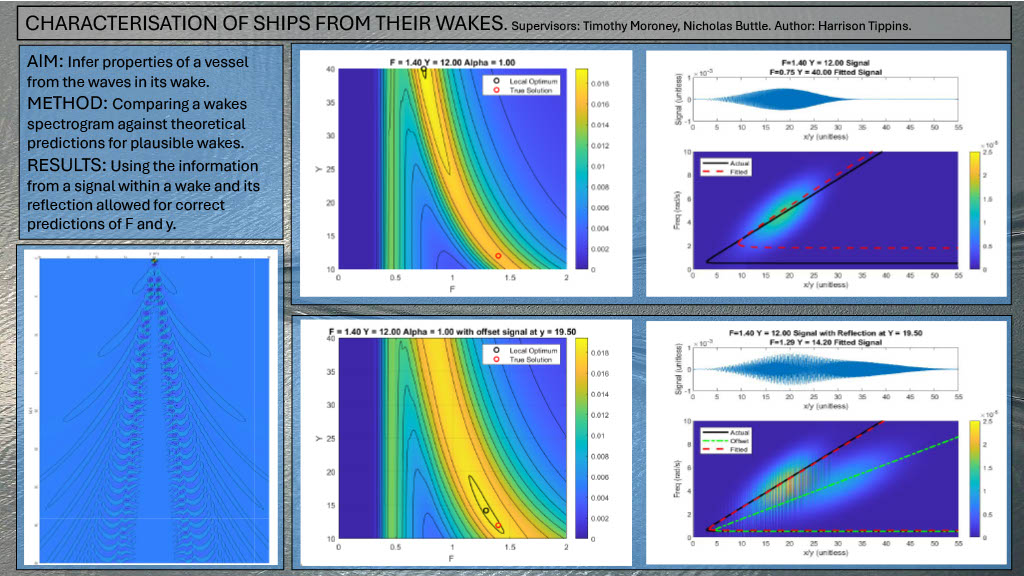Characterisation of Ships from their Wakes
Harrison Tippins
Supervisors: Prof Timothy Moroney & Dr Nicholas Buttle
When a ship moves through calm water at a constant speed, the waves it generates follow the famous V-shaped Kelvin wake pattern. Within the Kelvin wake, waves can be classified as transverse waves that move in the same direction as the ship or as divergent waves that move away from the ship at an angle. These waves are of interest as their attributes are determined by the characteristics of the vessel producing them. It is plausible that by measuring these waves, even at a single point over time, we can infer properties of the vessel responsible. We aimed to use a signal gathered from a single sensor measuring the wave elevation in the wake of a model ship being towed in an experimental basin facility to infer the speed and distance of the ship from the sensor. The key tool in this analysis is the spectrogram, which is a visual representation of the time-varying spectral composition of the signal, and which clearly distinguishes the transverse and divergent waves. By comparing against theoretical predictions across plausible ranges of speed and distance, we can generate a “heat map” identifying likely speed-distance pairs. When matched to a single signal, we found a significant degree of uncertainty within the distribution of the parameters, with multiple combinations being consistent with the observed signal; this observation is supported by mathematical water wave theory. However, in the true experimental signal, reflections of the waves off the side of the experimental basin acted as a serendipitous second signal, differing from the original only by a known offset based on the basin dimensions. By incorporating this second signal, we were able to localise the correct predictions in the speed-distance parameter space.
Media Attributions
- Characterisation of Ships from their Wakes © Harrison Tippins is licensed under a CC BY-NC (Attribution NonCommercial) license


